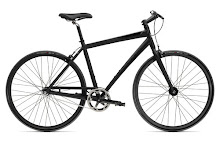Of Covered Malls and Bridges
In southern Indiana, a place I called home for 8 years while plodding through graduate school and a long-term teaching gig at IU, there are 91 remaining covered bridges dotting the countryside. These relics from the past are quaint (if not rickety), and serve as a constant reminder of how things were done in the past.
Today there are hundreds of covered shopping malls dotting the retail landscape of the US. And I'm beginning to wonder if they will soon become relics and reminders of a bygone era.
Retailing is a dynamic concept, an ever-evolving means of bringing the goods to us. The result is that there are new spans that reflect the latest in engineering and technology.
And there are covered bridges.
The enclosed mall as we know it may very well be on the verge of becoming a covered bridge. While covered malls have been popular in the US since the 1960s, customer tastes have changed and retail formats have evolved.
To wit: The latest trends are the "lifestyle center" and "town center" formats. Both are exceptionally pedestrian friendly and open-air. The former is typified by centers with two or more "anchors" and then adjacent rows of strip centers with boutiques, specialty stores, and restaurants. Parking is in little rows along the front sides of these shops, allowing customers to park curbside near their destination.
The latter take the idea one step farther and eliminate the parking between the shops, making for long strips of stores that face one another much like a downtown shopping district, with a concrete commons area between them. Outdoor cafes, park benches, and fountains dot the area, creating an atmosphere that beckons people to come and stay awhile.
Last November an Alabama developer announced plans to build a lifestyle center called The Shoppes at Southpointe along I-27 at the Hollywood Road exit. The site plans shows a tapestry of shops, parking, and pedestrians in an interesting maze of development on 100 acres.
Owners of enclosed shopping malls have lots to fear, in spite of what the management at Amarillo's Westgate Mall says. The elements are not to be feared as much as they would like, and shoppers are yearning for a fresh shopping experience that doesn't have the stuffy, stale, claustrophobic feel of a jet airliner.
So fearful of these new centers are these mall owners that some are buckling and doing whatever they can to create hybrid malls that try to appeal to customers who might want to head for greener pastures.
For example, the Edison Mall in Fort Myers FL is converting one wing to a lifestyle center, essentially flipping some stores so that they are accessible from the outside of the mall. Mall developer Westfield is busy converting 25 of its 68 US properties into hybrids that feature a lifestyle section. Their Westfield Shoppingtown Mall in Brandon FL just announced a 150,000 sq. ft. addition that will feature a Dick's Sporting Goods along with trendy shops and upscale restaurants.
While there is still much local debate over whether Amarillo can support its older mall, Southpointe and a new "power center" to replace Western Plaza, there is no doubt that change is on the horizon for shoppers. And Westgate Mall management needs to pull its head from the sand and face the music.
Because we don't need any covered bridges in Amarillo.
Dr "Mall Shook Up" Gerlich

